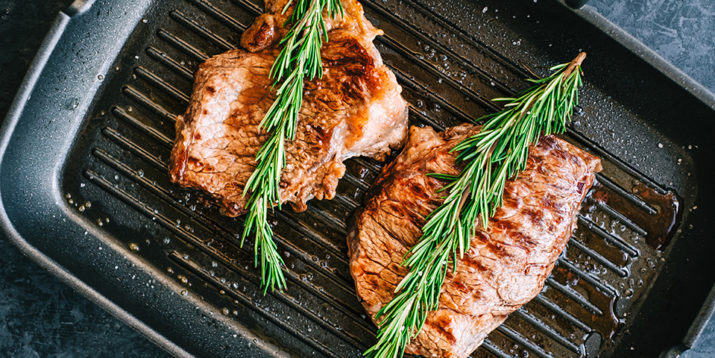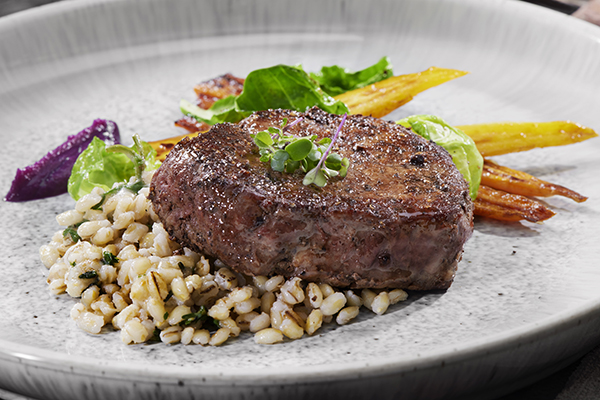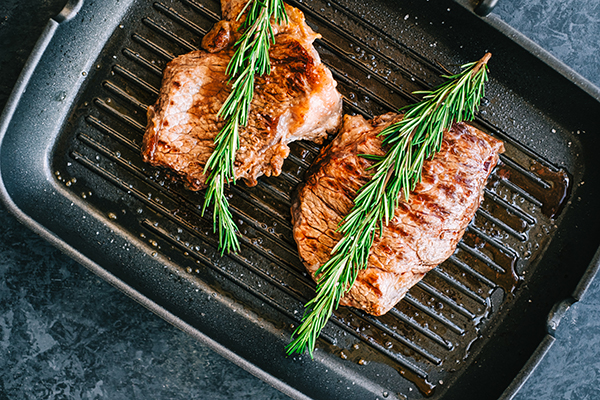Everything You Need to Know About Bison Meat

Wild game certainly isn’t new, but it’s getting more attention these days. Bison meat is the standout, with fans in the Paleo community extolling its virtues.
We’ll cut right to the chase: There’s a lot to like nutritionally (and culinarily) about bison meat.
But you’re not giving this meat a fair shake if you cook it without doing a little homework.
Although you can swap it for beef in recipes, there are several tricks to cooking it just right.
Here’s what you need to know about bison meat’s nutritional profile, how to cook this lean meat, and how it stacks up against beef.
Bison Meat Nutrition and Benefits
Bison meat has a similar nutritional profile to lean ground beef. Per 3 ounces cooked ground bison meat, you’ll get:
Calories: 152
Protein: 22 g
Fat: 7 g
Saturated fat: 3 g
Carbs: 0 g
Fiber: 0 g

How to Cook Bison Meat
You can buy ground bison or bison steaks. No matter which format you choose, “bison needs a lower temperature and a longer cook time, says Jim White, R.D., ACSM EX-P, owner of Jim White Fitness and Nutrition Studios in Virginia.
It’s best to keep it medium-rare, especially for the tender cuts. “Overcooking bison will result in tough meat and gamey flavor,” White warns.
If you’re working with a bison steak:
- Let the meat rest at room temperature for no more than an hour before cooking, to take the chill off.
- Marinate your steak or season with spices.
- Grill it slow and at a low temperature.
- Cook until it reaches an internal temperature of 145 degrees F.
- Remove the bison meat from the grill and place in a pan covered in foil.
- Let it rest for 5-10 minutes before slicing or serving.
White advises only turning the meat once to retain more juices and reduce the chance of overcooking.
Ground bison has the same challenge — you want to cook it so it doesn’t dry out and taste too gamey. To do that, you should:
- Bring the meat to room temperature (no more than an hour before cooking).
- Brush the pan with oil since lean meats can stick.
- Use medium heat to sauté the bison.
- Cook until the meat’s internal temperature is 160 degrees F.
You should ideally finish cooking the ground bison 5-10 minutes before serving to keep it juicy. Expect ground bison meat to cook in about 2/3 the time of ground beef.

Bison Meat vs. Beef
If you’re used to buying 80/20 or 85/15 ground beef, switching to bison will cut calories, fat, and cholesterol.
Since bison meat can be used in the same recipes as ground beef (similar to ground turkey), it’s also an easy substitute that doesn’t make it feel like you’re sacrificing the meals you love — like bacon cheeseburger meatloaf.
Bison also offers more selenium, a mineral that’s essential for healthy metabolic and immune function.
| Ground Bison | 80/20 Ground Beef | 95/5 Ground Beef | |
| Calories | 152 | 230 | 148 |
| Fat | 7 g | 15 g | 6 g |
| Saturated fat | 3 g | 6 g | 2 g |
| Protein | 22 g | 22 g | 22 g |
| Carbs | 0 g | 0 g | 0 g |
| Fiber | 0 g | 0 g | 0 g |
| Cholesterol | 60 mg | 75 mg | 75 mg |
| Iron | 3 mg | 2 mg | 2 mg |
| Selenium | 26 mcg | 18 mcg | 18 mcg |
| Vitamin B12 | 2 mcg | 2 mcg | 2 mcg |
| Zinc | 5 mg | 5 mg | 6 mg |
Bison meat is also harder to raise than beef, which means two main things for you, the consumer.
First, “it’s not generally available at most grocery stores,” explains Emily Tills, M.S., R.D.N., C.D.N.
Second, you’ll pay more for it.
“A butcher may be able to provide this meat, but the cost may be higher due to the farming involved in bison meat and low amount of bison farms,” she adds.
You can also find it at gourmet supermarkets or health food stores.
White points out that “a pound of ground bison can range from $12-$18 while ground beef is about $4-$5 per pound.”
And the low-fat content of bison can be a double-edged sword.
Tills points out that lean ground beef (95/5 ground, 96/4 ground, or tenderloin) also offers just about the same nutritional profile for far less money.
Bison’s edge over beef may also be diminishing. It used to be the case, as White points out, that bison were “handled very little by humans,” but this is changing.
Bison used to graze, meaning the meat was 100% grass-fed. In beef, grass-fed has more antioxidant-like compounds and omega-3 fatty acids than grain-fed.
“Bison also has a high ratio of healthy omega-3 fatty acids due to its grass-fed diet,” White adds.
But this is changing now that companies are raising bison on grain feed.
If you want to try bison meat, make sure you’re looking for 100% grass-fed to reap the full nutritional rewards.
